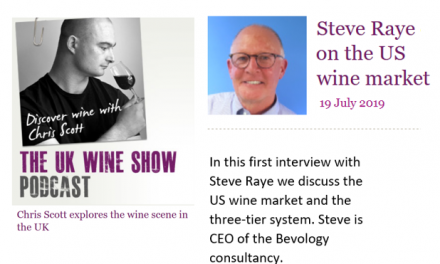Our trip began with a visit to a classic Heuriger, or local winery/restaurant where they serve the wine the make. So we got to visit with the winemaker and his family who also served as chef, waiter and host for the entourage. The warm welcoming atmosphere of the Heuriger typifies what the Austrian’s call Gemütlichkeit, loosely translated (by me) as meaning: we may not know you, but we’re happy you’re here, you’re welcome and you’re our new best friend…come, let’s eat and drink and talk together!
We sampled a range of classic Austrian dishes from Wiener Schnitzel to Tafelspitz and a bunch of other fabulous foods with names I can’t pronounce or spell. But it doesn’t matter…just point, eat and enjoy. Heuriger have institutionalized the concept of terroir and hospitality…you can only experience it by being there.
The beautiful sunny day started out propitiously but devolved into ominous rumblings turning to crashing thunder and then a steady rain. It didn’t dampen the groups’ spirits as we boarded the boat to take us across the Neuseidlersee, a reed-encircled shallow lake that is the center of the sweet wine region of Austria. The marshy environment is a haven for an incredible diversity of birdlife…and the humid conditions are perfect for the formation of Botrytis cinerea or noble rot. Notably around Rust on the western side of the lake, and Ilmitz on the east, it is the special fungus that is the necessary ingredient to making the classic sweet wines. Not being confined to the restrictive rules of an archaic regulatory system, the Austrians have been able to experiment and apply new ideas to the concept of classic sweet wines. I had had the pleasure of meeting Gerhard Kracher when he visited NY this past winter, and tasting his wines in their village of origin was a special treat.
Rust is a beautiful old city known for the storks nesting on practically every chimney. We visited the Wine Academy of Austria there, housed in a 400 year old tower and gatehouse and stable that defended the city in earlier times and has been refitted as center of wine teaching. Willi Klinger, the Managing Director of the Austrian Wine Marketing Board gave us a very comprehensive and entertaining overview of Austrian wines and the history of production and the innovation that has taken place over the last 30 years.
Then we heard from Christian Zechmeister, one of the more knowledgeable and passionate academy staffers who gave us an in-depth profile of the diversity of wines from Styria (aka Steiermark, the southern province of Austria), and of Burgenland.
All told we tasted 67 different wines today, and we worked our way through indigenous varietals including Grüner Veltliner, Blaufrankisch, Zweigelt, Saint Laurent, and Austria’s own names for Chardonnay (Morillon), Pinot Blanc (Weissburgunder) and Pinot Noir (Blauburgunder). What came out very clearly to me was a “national style”. Most of the wines including the reds are vinified in stainless steel and never see any oak. The result is very fresh wines balanced with distinctive racy acidity. So I could sense a common character across all the varietals and regions… wines of elegance that express a “sense of place” that are the perfect complement to a wide variety of foods, but particularly the new fusion cuisine. There’s a peppery note that defines Grüner, but I felt it was common in many of the other varietals as well. And I think that’s one element that makes Austrian wines so food-friendly.
And since almost all the wineries are family owned, not part of large companies, the innovation, creativity and passion of the producers comes through loud and clear. Two Grüners from neighboring winemakers share the common characteristics of the grape, but take advantage of the unique microclimate and soils to express a typicity of that place.







